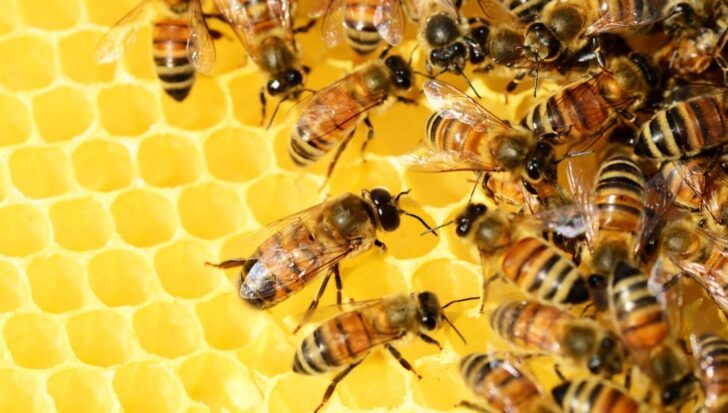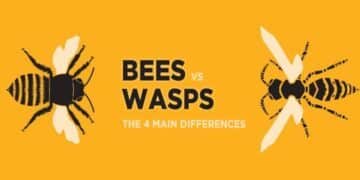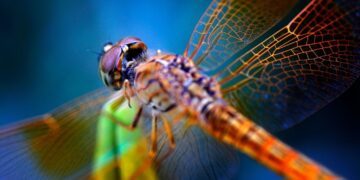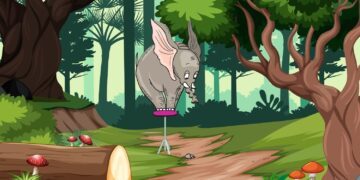Although most people have only heard of the honeybee, thousands of other species have unique identifying qualities.
With every species more curious than the next, there’s more to bees than you’ve ever heard about!
Get ready to learn about the importance of bees and what makes them unique with these buzzing facts you won’t bee-lieve!
About a third of the food we eat, including fruits, vegetables, and coffee, is pollinated by bees.
There are over 20,000 documented bee species. Out of these, the western honeybee is the most populous, and only 500-600 species are stingless.
Only 4,000 species of bees are native to North America. Of these, there are 46 native bumblebee species.
The largest bee species is Wallace’s giant bee, which can grow to 1.54 inches (3.9 centimeters) long and has a wingspan of 2.5 inches (6.3 cm). Scientists believed them to be extinct until they were rediscovered in 1981 in Indonesia.
On the contrary, the smallest bee is the Perdita minima, which is less than 0.08 inches (2 millimeters) long. That’s smaller than the eye of the largest bee!
If bees went extinct, we would lose 90% of apples, onions, blueberries, cucumbers, and carrots.
Only social bees live in hives, while solitary bees nest underground or in cavities in wood.
About 90% of the bee species in North America are solitary.
The “waggle dance” is the official name for the dance honeybees perform to communicate.
Surprisingly, bees have tongues, which they use to retrieve nectar from flowers. They are also known to use their tongues to groom themselves and other bees.
The main threat to bees is loss of habitat. The primary factors for this are human development, climate change, and industrial agriculture.
The population of a honeybee hive ranges between 20,000 and 60,000 bees. Hive populations are known to fluctuate throughout the year depending on the season and available food.
During its lifetime, a honeybee will visit about 20,000 flowers.
Only a few hundred bees in a honeybee hive are male drones. The rest are female workers that pollinate.
Throughout spring and summer, worker bees literally work themselves until they drop. Their life span is only 4-6 weeks.
When you see a swarm of bees, it is a natural result of an overcrowded hive. Swarms are more common in the spring when the hive’s population is growing in anticipation of the summer months.
The only continent bees aren’t found on is Antarctica. This is, of course, because of the harsh cold weather conditions and the lack of plants or freshwater.
Bees evolved from stinging wasps around 65 million years ago, around the same time dinosaurs were starting to go extinct.
There is an Indonesian dish called botok tawon in which bee larvae are served alongside rice and shredded coconut.
Based on ancient cave paintings found in Spain, smoke was used to put bees to sleep as early as 15,000 BC.
The ancient Egyptians are the first known civilization to demonstrate organized beekeeping, beginning around 4,500 years ago.
Of all the 20,000 bee species, only about 800 species actually produce honey. Only eight of these produce enough honey for commercial use.
Honeybee hives were brought to Virginia by European settlers in 1622. These were the first honeybees to live in the United States.
A species called the sugarbag bee mummifies its enemies. It uses wax, resin, and mud from its nest to cover its attackers and disable them. Unsurprisingly, they’re yet another of Australia’s weird animals.
The Himalayan giant honey bee is the largest species of honey bee at 1.2 inches (3 cm) long. A single nest of Himalayan giant honeybees has been known to contain up to 130 pounds (60 kilograms) of honey.
A species called the red dwarf honeybee can hiss to alert its colony of danger.
Unlike social bees, solitary bees are much less likely to sting because they do not have a hive to protect.
Because there are so many different bee species, it is difficult for researchers to track the endangered status of most bees.
The long-horned bee is a species with an antennae that is so long that it looks like a horn!
Bees are part of an order of insects called Hymenoptera, which also includes ants, wasps, and sawflies.
Queen bees typically live from two to three years, although some have been documented as living up to five years.

With thousands of species of bees worldwide, these facts are just the tip of the iceberg!
Bees aren’t just fascinating, though; they play such a crucial part in our ecosystem that they’re essential to life as we know it.
Hopefully, the next time you hear a bee buzzing near you, you’ll be able to remember these facts and see them for how important they really are!


















